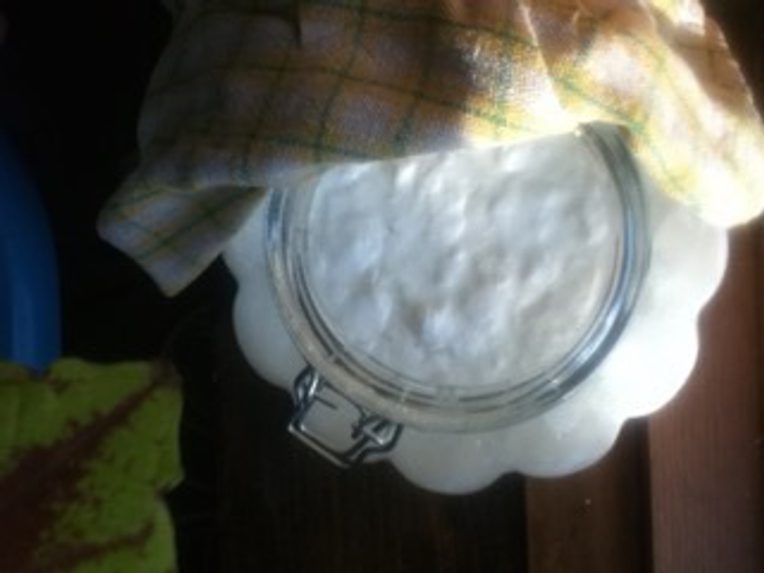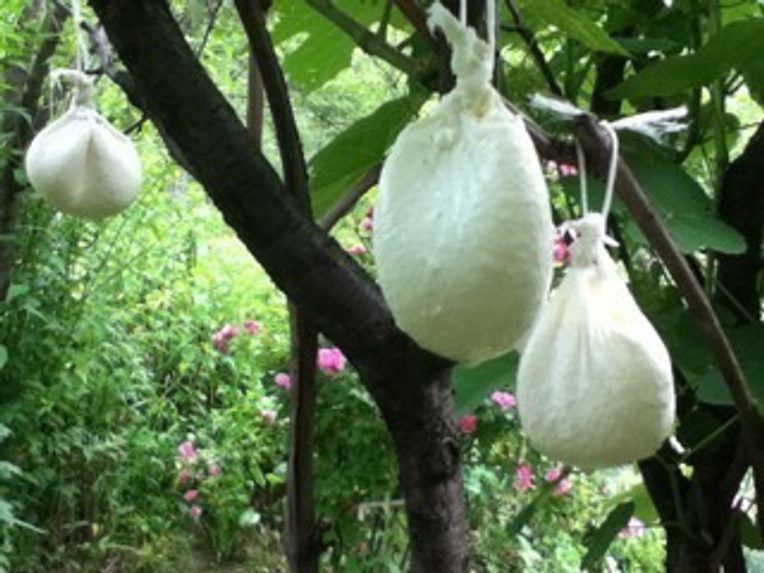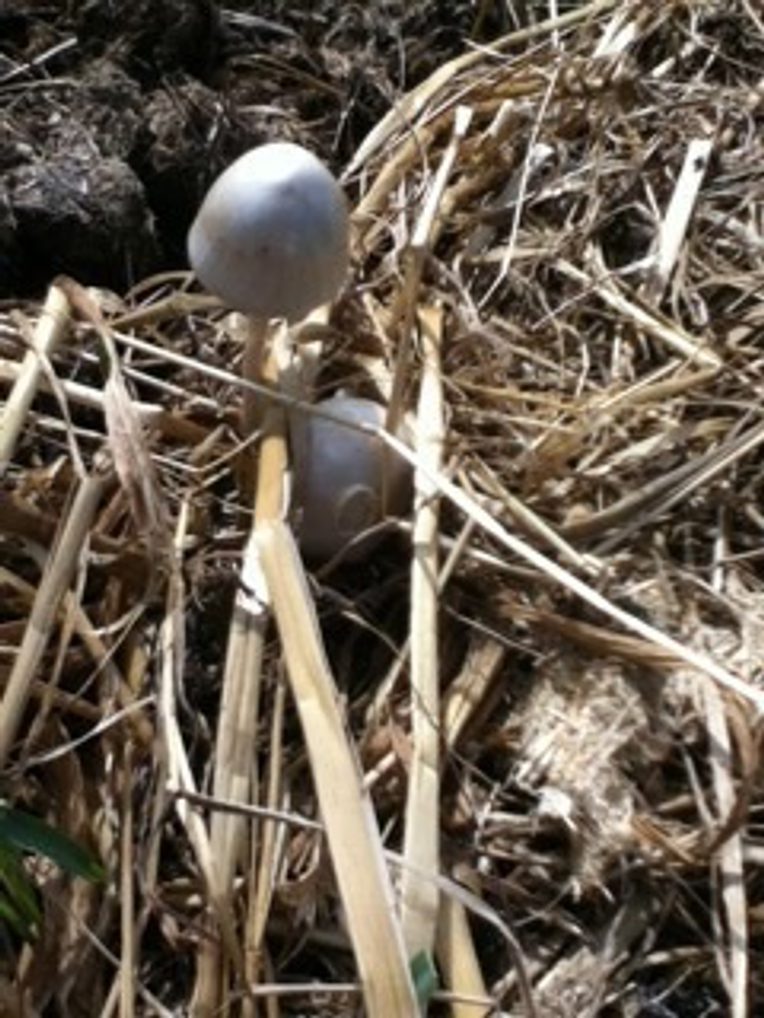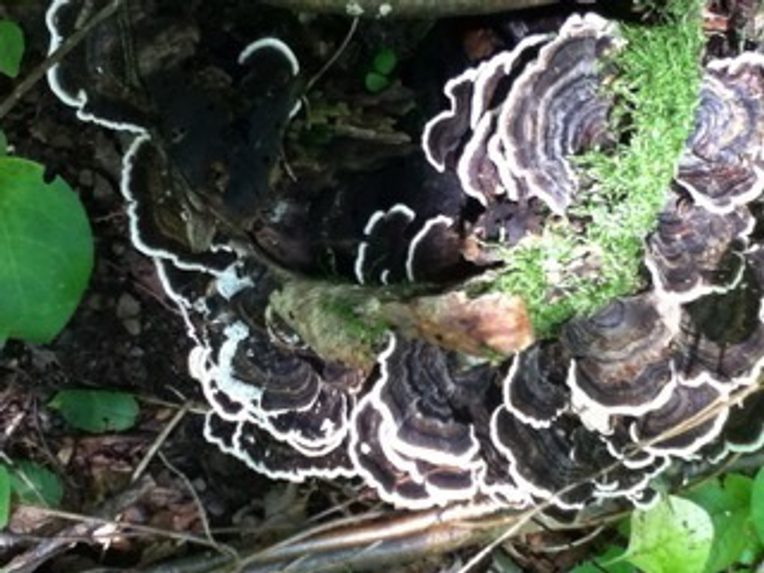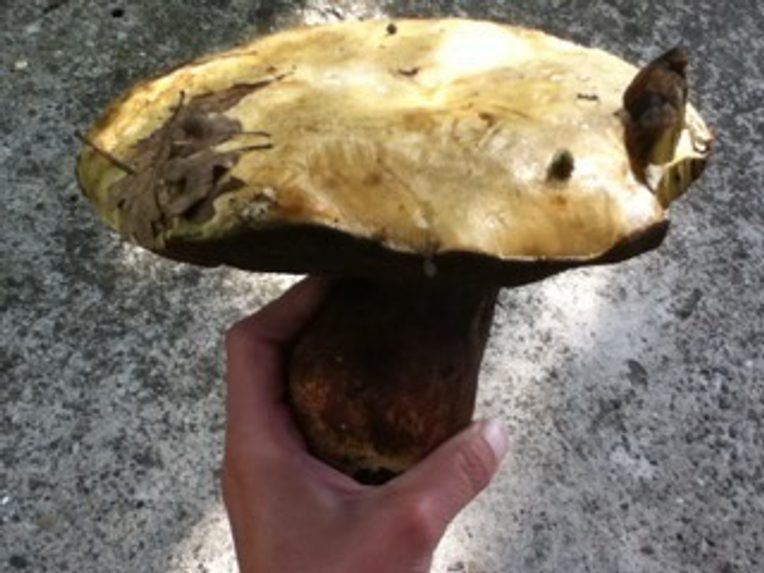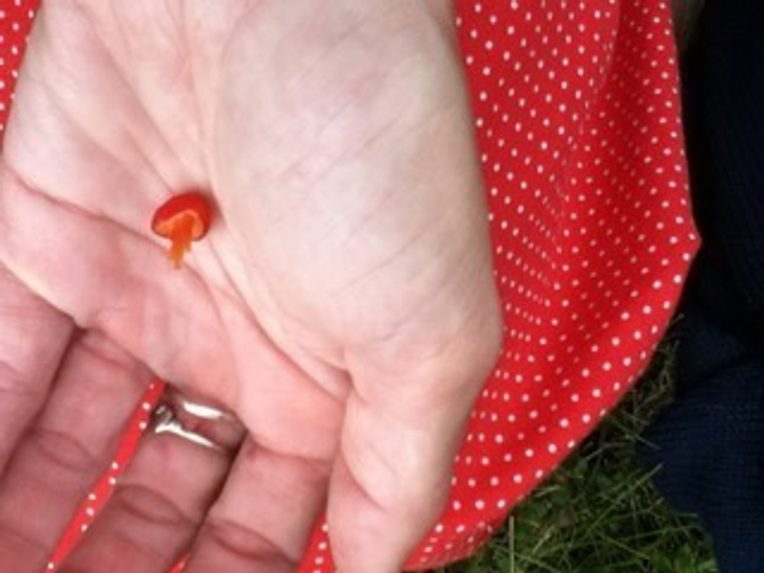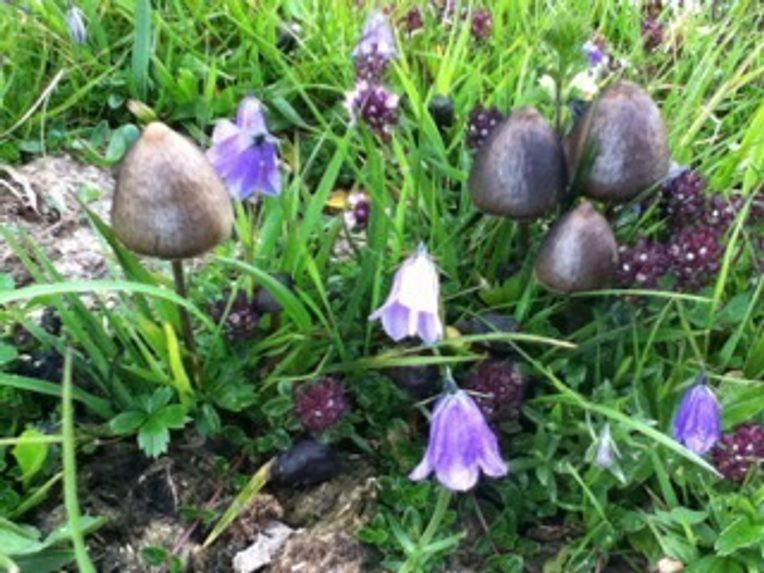This post builds on the research article “The Thing in a Jar: Mushrooms and Ontological Speculations in Post-Yugoslavia,” which was published in the February 2015 issue of the Society’s peer-reviewed journal, Cultural Anthropology.
Editorial Footnotes
Cultural Anthropology has published a number of articles that engage with the concept of multispecies ethnography, including Stefan Helmreich and Eben Kirksey’s “The Emergence of Multispecies Ethnography” (2010), Stefan Helmreich’s “Homo Microbis and the Figure of the Literal” (2011), Dorion Sagan’s “The Human is More than Human: Interspecies Communities and the New ‘Facts of Life’” (2011), and Joseph Dumit’s “Writing the Implosion: Teaching the World One Thing at a Time” (2014).
Cultural Anthropology has also published articles with food as a central analytical object, including Bianca Dahl’s “Too Fat to Be an Orphan: The Moral Semiotics of Food Aid in Botswana” (2014), and a Field Notes series on food with essays by Julie Guthman (Provocation), Dylan Gordon (Translation), Heather Paxson (Deviation), and Brad Weiss (Integration).
About the Author
Larisa Jasarevic is a Senior Lecturer in the International Studies Program at the University of Chicago. Her work on bodily economies in post-conflict Bosnia will be published by Indiana University Press. She is currently writing about a controversial, popular-science project in central Bosnia, and conducting field research on bees, apicultures, and metaphysics of nature in Bosnia and across ex-Yugoslavia.
Interview with Larisa Jasarevic
Leah Zani: In this article, you make a point of focusing on “banal power” rather than the more obvious powers of ethnic nationalism, political violence, or socialism. Your focus throughout is on the practicality, or efficacy, of mushrooms within domestic ontologies. Can you tell us more about this choice? In post-Yugoslavia, what are the stakes in focusing on the domestic? I should add that this is something that I think about in my own work on development in post-conflict Laos—where it is very easy to slip into the rubric of American imperialism.
Larisa Jasarevic: I’ve been, indeed, weary of slipping into the rubrics of ethno-nationalism, politics of identity, or of international intervention that came to dominate the scholarly and professional writings on Bosnia. Not only does such an emphasis on formal and muscular politics occlude so many domains of practice but it also trivializes the kinds of influence and mattering that are highly consequential. And while domestic dietary, gifting, and medical practices regularly spin out wider economies and ecologies and make alliances (trans-ethnic or trans-national) that politics as usual would seem to make impossible or unlikely, this alone is not what makes them worthy of a study. Formidable powers issue from the jars because they affect kitchens, diets, and bodies and because they test out different notions of bodiliness and togetherness.
LZ: Why is it important to study “medicine sideways,” as you advocate in this article?
LJ: This is a point I’ve been spinning for a while and am particularly invested in. Briefly, observers of post-socialist medicine have been interested in former public-health systems that are negotiating new biomedical technologies and global pharmaceutical ventures. Medical anthropologists of health in transition have also attended to ways in which the privatizing and marketizing of medicine is enmeshed in several overlapping economic and legal regimes: formal and newly neoliberal; informal and differently expensive, whereby care presumes the violence of gift, obligations, or extortions; and variously public, carrying on with state funds and sustained by broad expectations about professional ethics and free-of-charge medical care. Conversely, there are studies concerned with the rise in popular forms of health-care “alternatives,” that include anything from yoga and meditation to magical and traditional interventions. In the context of post-war Bosnia, especially, there are studies of many venues of psychosocial and psycho-pharmaceutical treatments of DSM-defined disorders, from PTSD to depression. Looking sideways affords insight into how economies that underwrite medical encounters intertwine, as well as how expectations and values are extended from other, seemingly unrelated sites of exchange (such as commodity markets or casual gift imposition). Similarly, rather than reify the notion of “biomedicine” as a discrete field of properly institutional practice against which all other therapeutic repertoires emerge as “alternatives”—so many oddities, fads, or folk practices the resurgence of which has to be somehow explained, and is usually explained by means of some cultural logic (post-socialist, post-traumatic but hopeful, enchanted but reasonable)—a sideways ethnographic insight approaches all the medical concerns and practices symmetrically. Finally, this lateral move that seeks and stumbles upon unexpected vantage points foregrounds the questions of bodily materiality and medical efficacy, thereby allowing the pathways of popular-medical practice to redefine what health and illness mean, where and how is a body in the world, how it works and ails, and what constitutes a medical relevance.
LZ: Wonder has a long and tangled history in the West. How do you engage with this history? How did you come to feel wonder in your research?
LJ: Put simply, I’d rather start with wonder than doubt. Since my research often treads in the zones of popular practices—economic, medical, magical, or hesitantly scientific—that already attract much skepticism, I cannot proceed by presuming to “know better” than my interlocutors. Isabelle Stengers (2012) recommends a similar strategy, with eyes on neo-pagan witches and other forms of activist, practiced knowledge claims. Much of our disciplinary training is about cultivating suspicion, whether towards our own disciplinary history or our interlocutors’ insights. This critical gesture, it seems to me, is overdetermined by the mythical history of disenchantment, which it rehearses with undue seriousness. Katharine Park’s and Lorraine Daston’s truly wondrous Wonders of Nature (2001), for instance, tells the story of wonder vanishing in the cold light of the rising, early modern science. We all know that story. The details that don’t fit in logically or chronologically—like Bacon’s manual on practical magics, or Descartes’s soul, or Tylor’s séance experiments—become quirky ornaments for special collections. This story would imply, then, that contemporary scientific wonder and passion must be obligatory, performed for the sake of recruiting allies, patrons, or educating publics, rather than, perhaps, conventional but no less intense narrative patches where multiple genres of passion and enchantment can be indulged in without compromising or denouncing the tenets of scientific reason. Botanist Nicholas Money (2011, xi–xiii), for instance, can start his lovely little Mushroom book with unrestrained prose about this “marvelous sight” on a suburban lawn, “the most wondrous inventions of the last billion years,” with “astonishing” reproductive capacities, before he plunges us—the presumably disenchanted, pettily anthropocentric common lot—into the deepest, bleakest cosmic pessimism: “the eternity of nothingness after death, and other daily trivia.” All in three small pages. I am curious about such leaps from wonder to existential and metaphysical meditations—be they professional or popular—and my current research is trying to think the trajectory with other lineages and histories of wonder and curiosity, and specifically “bewilderment” in Sufi knowledge practices.
LZ: What are some of the challenges of studying mushrooms—entities that, as you say, elude conventional matters of fact? For your interlocutors, the “little mushroom” is pluripotent, requires improvisation, and provokes speculation and experimentation. What does it require or provoke from you, as a researcher? And then, how do you choose to present that for a mainstream academic audience?
LJ: I present the mushrooms with excessiveness, without toning down the stirring they occasion among those involved with them, including myself. Admittedly, the biggest challenge at first was taking the little mushroom seriously, noticing it with due attention. I registered their presence years ago but did so with a dull eye that only picked up their quirky looks and random placements. Eventually, continued interest in domestic medicine, medicinal plants and foods expanded the repertoire of things that called my attention. When my own health complaints earned concerned interventions, I was better able to appreciate mushrooms’ biographical, economic, and therapeutic contexts. But when I got my hands into the business of fermenting, handling the cultures, smelling, tasting, and improvising the beverages, the jars effectively shifted my writing hand towards the questions of the things’ elusive natures and their highly influential form. At this point, the kitchen experiment—at which I was never very good—became a writing experiment, and, to me, so much more exciting for that. How was I going to write the shifting, exuberant, mysterious form without stilling it? How was I going to speculate without deciding the matter, finally, with some theoretical confidence or with a preference for some well-established philosophical or anthropological oracles that otherwise inspire me? It was fun to try and let the form of the mushrooms and modes of their circulation guide the writing-thinking process.
LZ: We are experiencing an efflorescence of work on ontologies, speculative realisms, new materialisms, and the like. The positive influence of this scholarship is clearly visible throughout your article. Less visibly, what other scholarly conversations have enabled your thinking on ontologies and mushrooms?
LJ: Ethnographies and even classic anthropologies of magic, the way I read them—generously, not getting hung up on the obligatory disclaimers and rationalist rhetorical ticks—have already anticipated, even urged, a wilder speculative imagination about the composition of the world, about the grand themes of efficacy and causality, about the radical instability of material bodies and things. I’ve also always read Jean-Luc Nancy’s phenomenology of bodies and contact (as well as Derrida’s loving treatment of it, in On Touching: Jean-Luc Nancy [2005]) as excursions into ontological and metaphysical questions (concerning intangible extensions and oddly multiple, extendable bodies). Nancy’s more recent thoughts on dis-enclosure of the (Christian) metaphysics, is just a different entry into the new domain of speculations. Truth to be told, however, I grew a bit peeved by both my citational practices and by certain notes that current speculative philosophies jointly sound. I have a feeling that my most current project on apicultures in Bosnia can only continue ontological speculations with different sources of inspiration: with Sufi metaphysics of nature, which my beekeepers variously reference, and with the practical experimentation of the apicultural and herbal medicine manuals.
LZ: Do you participate in the mushroom gift economy? As part of this supplemental, we are planning on including guidelines for nurturing kefir cultures. May interested readers ask you for the gift of surplus mushrooms to begin their own cultures?
LJ: I wish I did. While in Bosnia, it is easy to do and difficult not to. The tea-based and dairy cultures I originally adopted have moved on since and are sustaining more relationships than I can trace. Each summer, I reunite with some of their descendants or consume beverages that my family and friends make. But my time in the U.S., during the academic year, made more immediately obvious the point that I make in the text: while mushrooms’ nature certainly recommends forms of distribution and inspire generosity, their flourishing also very much depends on the wider economy within which they can move as gifts and offerings, while at the same time, signing and flexing the limits of the cultivators’ social being. My being social in Chicago and North America is such that I have long run out of people to offer or give mushrooms to. I also took breaks from fermenting since I became oddly responsive to both tea and dairy brews. I’ve just re-installed dairy kefir in my kitchen and if the experiment goes well, I’ll have plenty of kefir grains to share, if anyone wants them.
References
Derrida, Jacques. 2005. On Touching: Jean-Luc Nancy. Translated by Christine Irizzary. Stanford, Calif.: Stanford University Press.
Money, Nicholas P. 2011. Mushrooms. New York, NY: Oxford University Press.
Park, Katharine, and Lorraine J. Daston. 2001. Wonders of Nature, 1150-1750. New York, NY: Zone Books.
Stengers, Isabelle. 2012. “Reclaiming Animism.” E-flux Journal 36: 1-10.
On Brewing Kefir and Kombucha
Recipes, Theories, Philosophies, Cosmologies, Calls to Action
Katz, Sandor. 2012. The Art of Fermentation. White River Junction, VT: Chelsea Green Publishing. (Kombucha pp.167-174; Kefir 192-196)
Sources in BSC (Bosnian, Serbian, Croatian)
Anita Šupe’s webpage, Coolinarka
Kefir and Kombucha Online Fermentation Support
Forums gathered through Sandor Katz’s personal web page, Wild Fermentation: Dairy Ferments, moderated by Christopher Weeks and Tim Hall
Tonic Beverage Ferments, moderated by Christopher Weeks and Tim Hall
Starter Cultures Source, Gifts and Sales
G.E.M. Cultures (both kefir and Kombucha)



